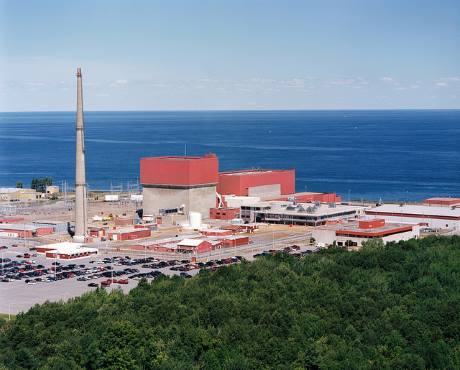The overall benefits of keeping New York's upstate nuclear power plants in operation under the state's Clean Energy Standards (CES) program would significantly outweigh the costs, a study by economists at the Brattle Group has found.
 |
| Fitzpatrick: one of three nuclear plants in upstate New York (Image: Entergy) |
The report, authored by Mark Berkman and Dean Murphy and released on 21 April, analyses a cost study on the CES White Paper which was published by the New York State Department of Public Services (DPS) earlier this month. In January, the state's Public Service Commission ruled that non-carbon emitting generation resources including nuclear power plants must be included in the CES portfolio. The commission is now in the process of drawing up its final CES program.
According to Berkman and Murphy, the DPS cost analysis found that the carbon abatement benefits alone from retaining the state's three so-called up-state nuclear power plants - two units at Nine Mile Point and single units at RE Ginna and James A Fitzpatrick - would exceed the costs by a factor of 6. The component of the CES which would preserve the upstate nuclear plants is responsible for over 50% of the CES program's lifetime financial benefits from carbon avoidance, while incurring only 21% of the program's overall costs.
Berkman and Murphy's analysis found that, when economic as well as environmental benefits were factored in, benefits exceeded costs by a factor of 70. The additional benefits come from savings in electricity costs and from employment when keeping the plants in operation, resulting in increased GDP for the state. The authors estimated that keeping the plants in operation would account for over 24,000 direct and indirect jobs.
"Based on our analysis, implementing the CES will avoid a significant amount of carbon emissions that would occur if the plants retired and cost far less than the adverse effects, including lost economic contributions and jobs, that would result if New York's upstate nuclear plants were to cease operation," Berkman said. "The CES would go a long way to ensuring the continued viability of these nuclear facilities, thereby preserving their role in contributing to the state's economy and environment."
US nuclear plants operating in deregulated markets, such as those in New York State, face economic challenges from the short-term nature of the competitive market, coupled with competition from low-cost gas and federally subsidized wind power. This has led to calls for market reforms to ensure that the nuclear power is valued more appropriately. The specific recognition of nuclear in New York's CES is an example of such a reform. Nevertheless, New York's Entergy confirmed in February that the Fitzpatrick plant will close in 2017 for economic reasons.
The Brattle Group study was commissioned by labour organizations New York State IBEW Labor Council, Rochester Building & Construction Trades Council and Central and Northern New York Building & Construction Trades Council. The organizations are all members of the Upstate Energy Jobs coalition of municipal, business, labour, education and economic development leaders founded in November 2015 to support the continued operation of New York's up-state nuclear power plants.
Researched and written
by World Nuclear News




_18570.jpg)
_16159.jpg)
_18938.jpg)
_33584.jpg)





